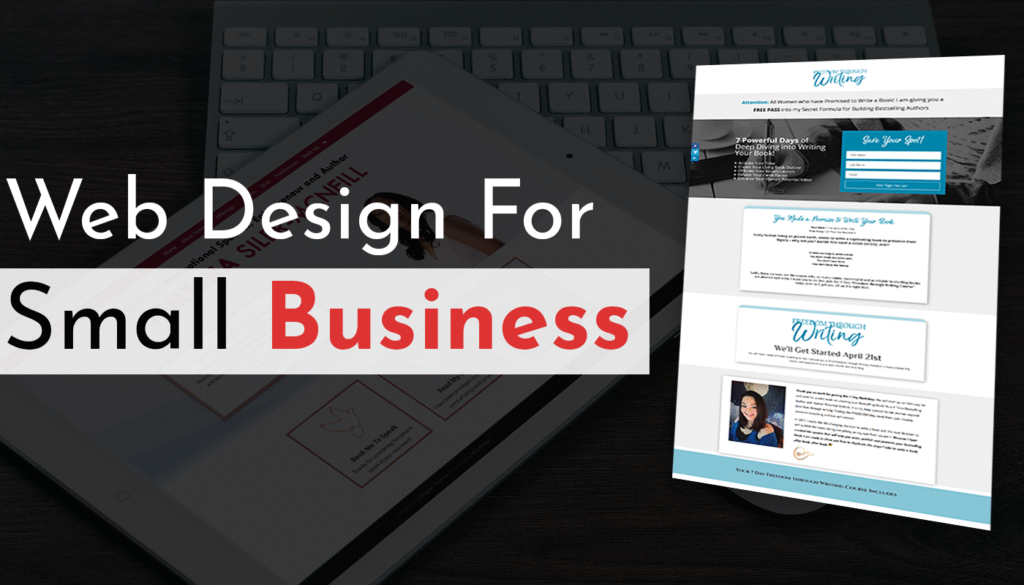
Introduction
In the current digital era, a professional and well-structured website is no longer a luxury but a necessity — especially for small businesses. The rise of online shopping, digital discovery, and search engine usage means that having a robust online presence can directly impact your sales and growth. And at the center of that presence is effective website design for small business.
Core Components of a Successful Website for Small Businesses
1. Mobile-Responsive Design
With smartphones dominating internet usage, your site must adapt to various screen sizes. A responsive design ensures the content, images, and layout adjust automatically, improving usability and user satisfaction.
2. Effective Calls-to-Action (CTAs)
Strategic CTAs like “Schedule a Call,” “Get a Free Quote,” or “Contact Us” guide visitors on what action to take next. Position these buttons logically throughout the site to improve interaction and conversions.
3. Speed and Performance Optimization
Slow websites lose customers. Every second of delay can reduce engagement and affect search rankings. Use compressed images, reliable hosting, and clean code to enhance your website’s speed.
4. SEO Best Practices
Optimizing for search engines is essential. Your site should include well-placed keywords like website design for small business, structured headings, meta tags, and clean URLs to appear in local and organic search results.
5. Simple Navigation Structure
Your visitors should never feel lost. Keep menus concise, organize information clearly, and make sure the most important content is accessible within one or two clicks.
6. Strong Brand Identity
Use consistent colors, typography, and imagery that reflect your brand’s personality. Whether you’re running a law firm or a salon, your design should match your brand’s tone and mission.

Understanding User Behavior: The Human Side of Design
Design psychology plays a crucial role in user engagement:
- Color choices influence perception. Green conveys harmony, while orange evokes excitement.
- Whitespace gives the design breathing room, making content easier to digest.
- Readability matters. Use professional, easy-to-read fonts and avoid large blocks of text.
When planning website design for small business, it’s important to think from the user’s perspective. Ask: “Is this easy to understand? Does it answer their questions? Can they take action quickly?”
Top Mistakes to Avoid
- Ignoring Mobile Optimization
Mobile users are the majority now. A desktop-only design is outdated and costly in terms of user loss.
- Ignoring Mobile Optimization
- Cluttered Homepage
Too much information upfront overwhelms visitors. Use hierarchy and spacing to guide the reader’s eyes.
- Cluttered Homepage
- Lack of Clear Contact Information
You’d be surprised how many websites miss out on leads because their contact info is buried in footers or missing altogether.
- Lack of Clear Contact Information
- Outdated Design Elements
Web design trends evolve. A site that looks like it was built in 2010 reflects poorly on your brand — even if your services are modern.
- Outdated Design Elements
Budget-Friendly Tools for Small Business Websites
You don’t need an expensive agency to build a professional-looking site. These tools are cost-effective and user-friendly:
- Wix or Squarespace: Great for beginners.
- WordPress + Elementor: Highly customizable and scalable.
- Shopify: Ideal for e-commerce-based small businesses.
- Canva: For creating banners and visuals.
- Google Search Console: For monitoring SEO performance.
Case Example: From Obscure to Online Success
Let’s consider a real-world scenario. A small carpet cleaning company based in Pune had an outdated, text-heavy site. It wasn’t mobile-friendly, lacked local SEO, and had no images. After a redesign that included mobile optimization, proper CTAs, and an “About Us” page with real photos and testimonials, traffic increased by 300% within four months — and so did their client base.
Conclusion: Your Website Is a Silent Salesperson
A website works 24/7. It doesn’t take breaks, holidays, or sick leaves. But if it’s not designed properly, it could be silently pushing customers away.
Smart, strategic website design for small business improves visibility, builds trust, and drives conversions. Focus on the fundamentals — mobile responsiveness, clarity, speed, and SEO — and you’ll be laying the digital foundation for long-term success.
Whether you do it yourself or hire a professional, investing in a quality website is one of the smartest moves any small business can make in 2025.
